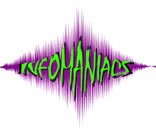POWERDIGMS
- A show with Meaning, Purpose, and Educational Content
...(yes, excitement
and promotion too!)
This is the
show series we've been developing content for since the mid-eighties,
that has evolved from our earlier performance works Into the
Mind of the Scientist and Lost in VR, and that we've
been planning since early '94.
Powerdigms,
short for Powerful Paradigms, takes the audience on wild,
interactive rides into the realm of models, perspectives, theories,
and points of view.
The first mission:
Powerdigms of the Multimedium.
An A-life
creature named Aleph is found consuming cycles from the CyberSpaceShip's
central computer following a tumultuous ride into an uncharted region
of Cyberspace, known only by legend as the Multimedium.
Aleph offers
navigational assistance. In exchange, he asks the crew (read audience)
to help him locate his creator, a renaissance woman in search of
absolute truth.
As Aleph and
crew explore the Multimedium, questions arise concerning Aleph's
creator: What does it really mean to be a scientist? To be an artist?
What does being human mean?
The quest for
answers leads the crew to the discovery and experience of their
first Powerdigm: science and art are flip sides of the same coin
- both rely on mental models to span the chasm between abstract
ideas and concrete experiences - science primarily moves one way
across this chasm and art the other - and to be human is to move
freely in both directions.
The crew
becomes empowered - each member directly experiences their own
mind performing as a scientist and as an artist. They can understand.
They can create. They have the wherewithal to venture forth with
Aleph into still deeper questions of reality, meaning, and truth
- in search of new Powerdigms.
Though the
waters are deep, the crew never bores or feels out of their depth,
a consequence of original pedagogy, clever metaphors, outrageous
visuals, sound, theatrics, and special effects, and a format of
interactivity that supports collaboration (not just majority-rules
voting).
An engineering
systems display in the CyberSpaceShip continually alerts
the crew to the products, vendors, and technologies in use - without
breaking the dramatic context. This supports both the promotional
needs of the sponsors and the informational needs of the audience.
Powerdigms
truly operates on multiple levels. It promotes. It entertains.
It informs and educates. It provides more than content - it
dares to enter the realm of the meaningful.
And most importantly,
it empowers, giving each participant the direct experience
that there is more to the world and to themselves than they could
see from their previous perspective.
That's the
bottom line - removing the limitations that we live under when we
view the world and ourselves from a single point of view. That's
the reason for the "s" in Powerdigms, to escape
the straight jacket of a single model, theory, or perspective, no
matter how powerful. To encourage and enable multiplicity.
Powerdigms
is flexible. It can travel to both art and science museums.
At industry trade shows it can become the core, the main
menu so to speak, of a larger event, surrounded by breakout sessions
that explore in greater detail the products and vendors featured.
And Powerdigms
can be instantiated as a live show, traveling or stationary,
it can be an exhibit, a CD-ROM, a TV show,
and books of all types, from comics to coffee table.
The story I've
outlined is just the first in a series.
There is seemingly
no end to the multiplicity of Powerdigms.
|

